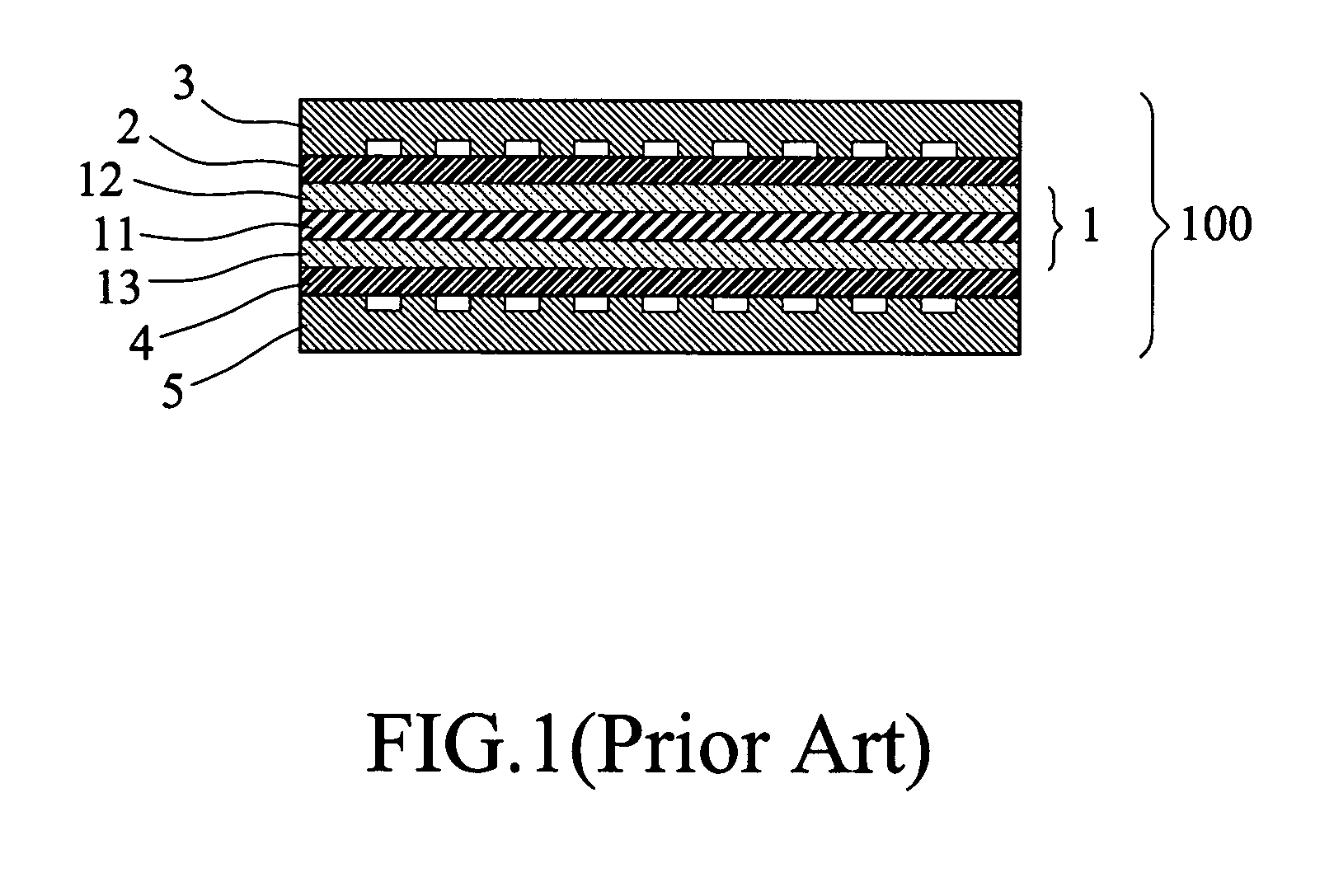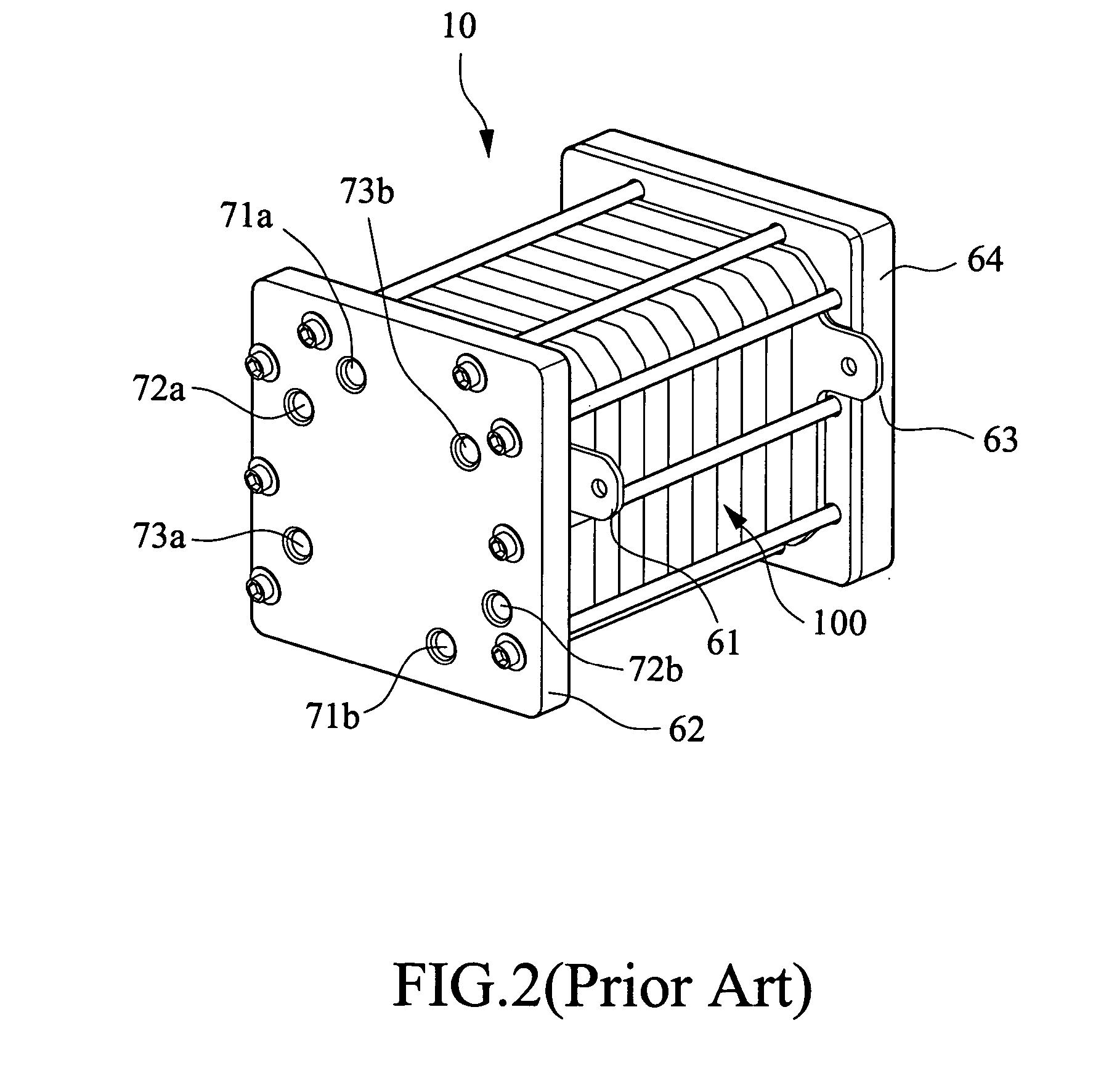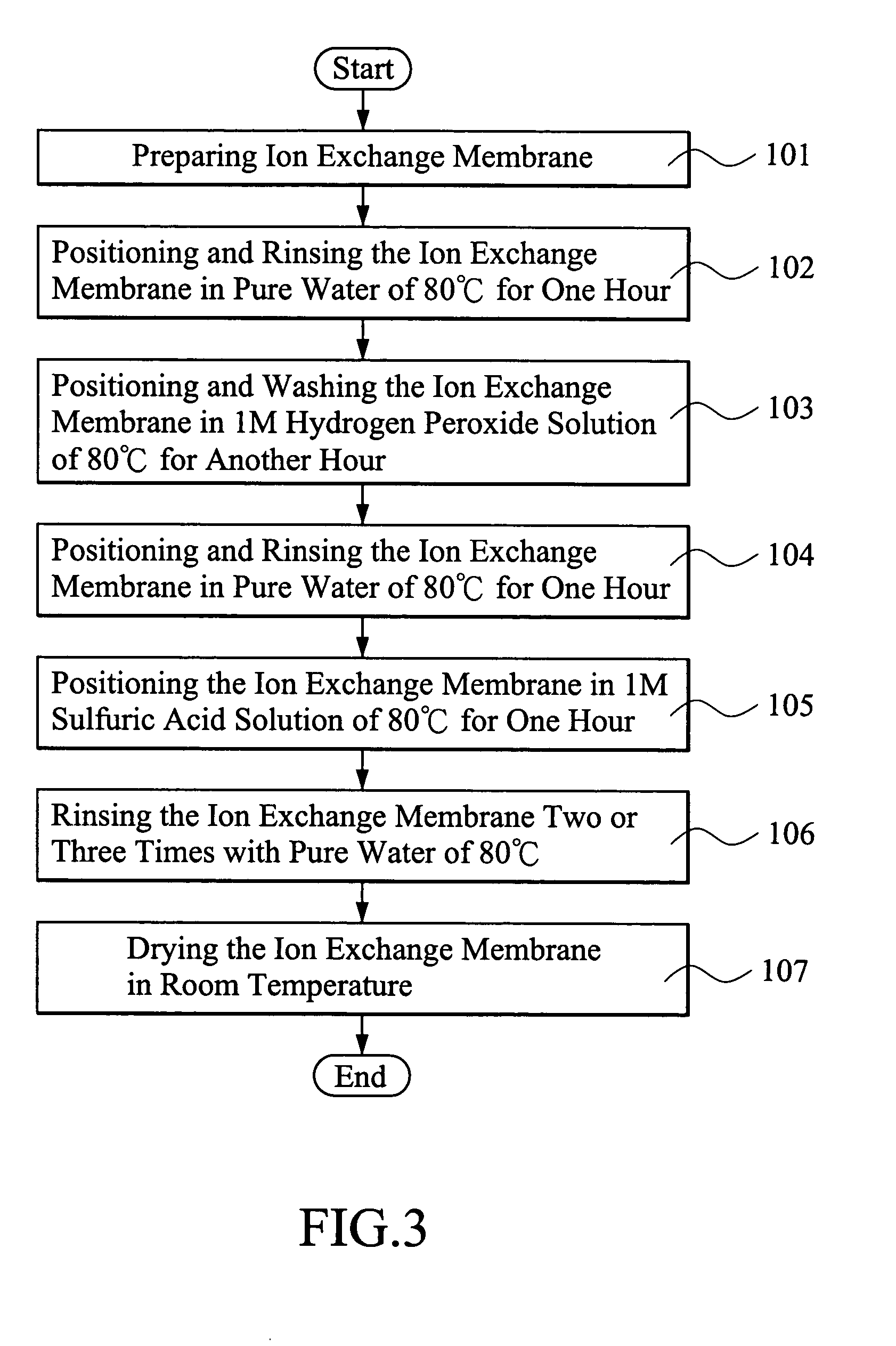Method for manufacturing membrane electrode assembly of fuel cell by printing processes
- Summary
- Abstract
- Description
- Claims
- Application Information
AI Technical Summary
Benefits of technology
Problems solved by technology
Method used
Image
Examples
Embodiment Construction
[0027] The present invention discloses a method for manufacturing a membrane electrode assembly (MEA) of a fuel cell by printing. An MEA is comprised of an ion exchange membrane having opposite surfaces on which anode catalyst and cathode catalyst are coated respectively. In the method in accordance with the present invention, the ion exchange membrane is cleaned first in a cleaning process and anode catalyst solution and cathode catalyst solution are prepared in a catalyst solution preparation process before a printing operation for the formation of the MEA is performed. These processes will be described in details hereinafter.
[0028]FIG. 3 shows the ion exchange membrane rinsing process. An ion exchange membrane is prepared first (step 101). A suitable example for the ion exchange membrane is Nafion® of Du Pont Corporation. A preferred example of the ion exchange membrane is Nafion 117 having a thickness of 175 μm, which is considered thick enough to block transmission / penetration...
PUM
| Property | Measurement | Unit |
|---|---|---|
| Temperature | aaaaa | aaaaa |
| Temperature | aaaaa | aaaaa |
| Temperature | aaaaa | aaaaa |
Abstract
Description
Claims
Application Information
 Login to View More
Login to View More - R&D
- Intellectual Property
- Life Sciences
- Materials
- Tech Scout
- Unparalleled Data Quality
- Higher Quality Content
- 60% Fewer Hallucinations
Browse by: Latest US Patents, China's latest patents, Technical Efficacy Thesaurus, Application Domain, Technology Topic, Popular Technical Reports.
© 2025 PatSnap. All rights reserved.Legal|Privacy policy|Modern Slavery Act Transparency Statement|Sitemap|About US| Contact US: help@patsnap.com



